On 11 October 1982, the Mary Rose surfaced for the first time in 437 years, marking the beginning of an extraordinary conservation journey. Eleonora Piva recounts the intricate conservation efforts involved in preserving the ship's timbers and artifacts, showcasing the challenges faced by the team as they brought this Tudor warship back to life.
Introduction
On 11 October 1982, in front of the eyes of hundreds, the timbers of the Mary Rose surfaced from the waters of Portsmouth for the first time in 437 years. After being the Flagship of King Henry VIII’s fleet and in service for over thirty four years, from that day a completely new phase of her story began. Housed in a dry dock in Portsmouth Historic Dockyard, an example of well-established treatments and at the forefront of new scientific techniques in conservation, this only surviving Tudor ship is now on full display in the Mary Rose Museum.
The Origin
The story of the Mary Rose begins in 1510, when the newly crowned King Henry VIII started building his ‘Army by Sea’. His first request was for two carracks: the bigger one, of 400 tons, was the Mary Rose. Although she was never the fastest ship of her time, she was overall the most successful, which earned her the title of flagship.
The Mary Rose was special also for another reason: she was specifically built for the King, who probably contributed to her design. Hence reports from the time cannot always be considered reliable, as it may have been in everyone’s interest to compliment the King and make him proud.
After just one year of being launched, she took part in several actions during the First French war (1512–1514). However, since the 16th century was a time of fast development in shipbuilding and artillery, she did not take part in the Second French war (1522–1525) as she needed major reinforcement and refitting in order to be employed at war again. She was therefore put in reserve between 1522 and 1545, when the Third French war took place. On 19 July 1545, during the Battle of the Solent, she sank while leading the English fleet against the invading French galleys. Her defences against boarders proved to be the downfall of many of her crew. Fewer than twenty five of the five hundred souls on board managed to escape her sinking.
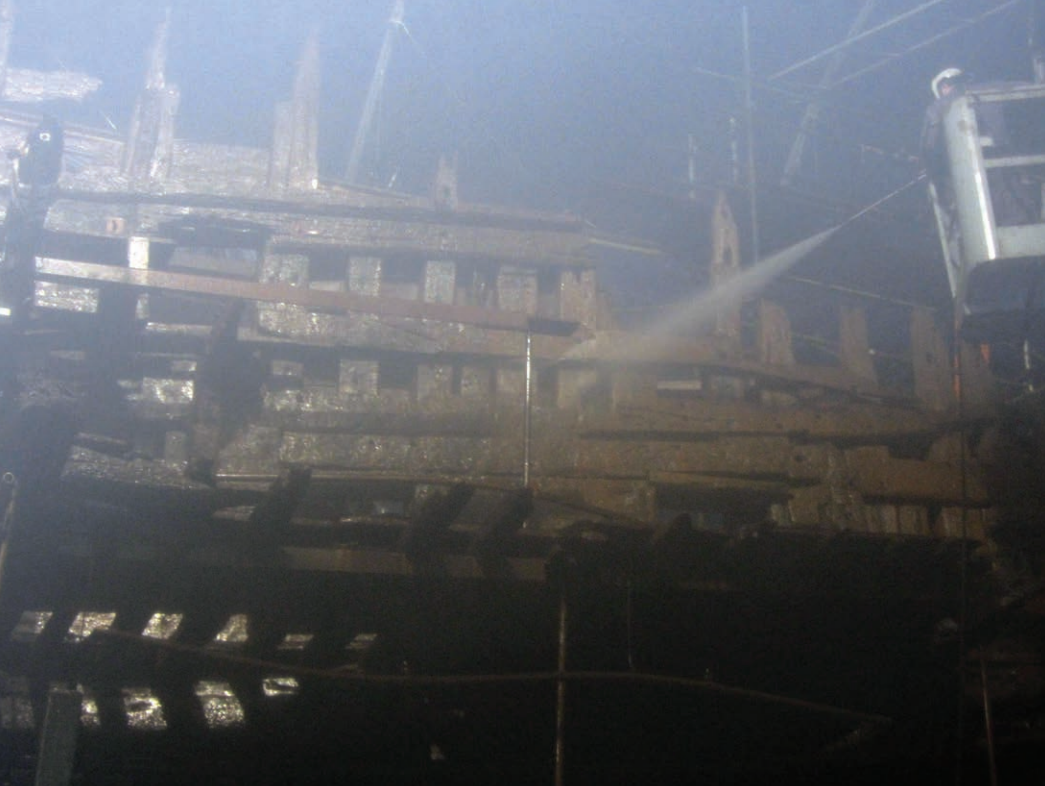
View of the castle deck, port side of the Mary Rose during the final phase of PEG spraying in 2013
The Recovery
Several attempted the recovery of this famous ship, the first being just days after she sank. All failed. She then remained untouched until three hundred years later when the Dean Brothers, who are considered to have invented what we now call scuba diving in the 19th century, rediscovered the site, retrieving some artefacts. Again, the site was left undisturbed until 1971, when she was rediscovered by a very dedicated diver and historian, Alexander McKee.
Thanks to the later involvement of an archaeologist, Margaret Rule, the discovery soon led to a four-year excavation, over 23,000 hours of diving, the recovery of more than 19,000 objects, and finally to the recovery of the hull itself. The years spent underwater obviously had an impact on the ship, to the point where half of the hull was lost to shipworms, waves and numerous other hazards of the underwater environment. Indeed, only the starboard side lying on the seabed was completely covered with silt and protected in an anaerobic environment, allowing the survival of the Mary Rose.
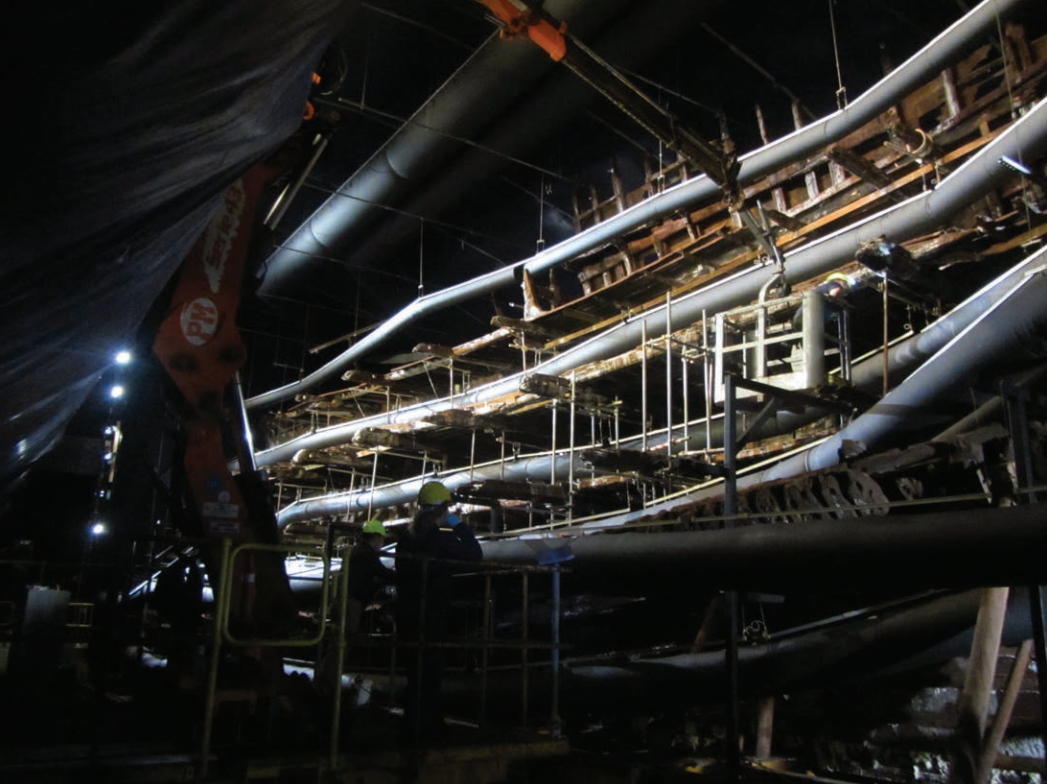
Installation of the air ducts for the conditioned drying of the hull
The Conservation
Conserving such a big artefact from a marine environment clearly presented a massive challenge. It was decided to approach the conservation of the ship as a whole, when at the time the only comparable venture was that of the Vasa in Stockholm. Therefore, all the original planks and timbers from the decks, which were removed underwater to simplify the lift, were replaced. To ensure the mechanical stability of the remaining hull structure, titanium support props and beams were strategically placed to compensate the missing elements.
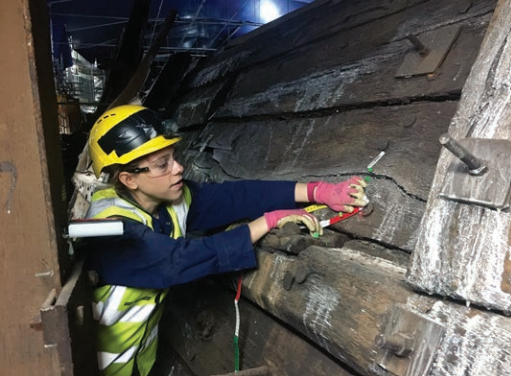
Nora Piva taking movement measurements of the starboard side planks during one of the manual surevey rounds of the ship
She was sprayed with cold water for twelve years, to keep her wet, wash away salt, mud and any chemicals contained in sea water but also to slow down any bacterial activity eventually activated after being exposed to the oxygen rich air. It was only in 1994 that the conventional polyethylene glycol (PEG) conservation treatment started.
This technique employs a polymer, PEG, to impregnate the waterlogged organic material. The two steps method chosen consisted in applying two different molecular weights of PEG, to achieve both improvement for shrinkage and collapse of the degraded wood cells. The ship was first sprayed with PEG 200 for twelve years and starting in 2006 she was sprayed with PEG 2000 for an additional seven years.
The Drying
Finally on 27 April 2013 the PEG sprays were turned off and the Mary Rose started drying for the first time since the 16th century. The drying plan was designed by the Conservation Manager of the time, Glenn McConachie, who published his PhD thesis on this topic.
The ‘hot box’ where she was sprayed for thirty one years was kept sealed at a controlled temperature of 19°C and at a stable relative humidity of around 54%. An air conditioning system of tubes running along all the decks insured a homogeneous drying of all areas of the ship. To keep track of the progress, throughout the following three years, core samples were regularly collected from the hull.
As of May 2016, the moisture content in the ship was around the desired 10% on the wood surface and at most 20% in the deeper parts of the timbers.

A member of the conservation team collecting core samples from the starboard side of the ship to determine the moisture content
The Monitoring
It is no surprise that having only half of a structure designed to be whole and, especially, to be in water and not in a museum causes tremendous structural issues. These are emphasised by the degradation of the wood components and the inevitable shrinkage of the wood. Measuring the structural stability of the timbers has been therefore a key component of the monitoring regime.
This will also inform the design of a future permanent supporting structure for the ship to be hosted in the museum long term. Some of the measuring is automated, with a Total Station sponsored by Leica Geosystems, recording daily the displacement of particular targets spread all over the decks.
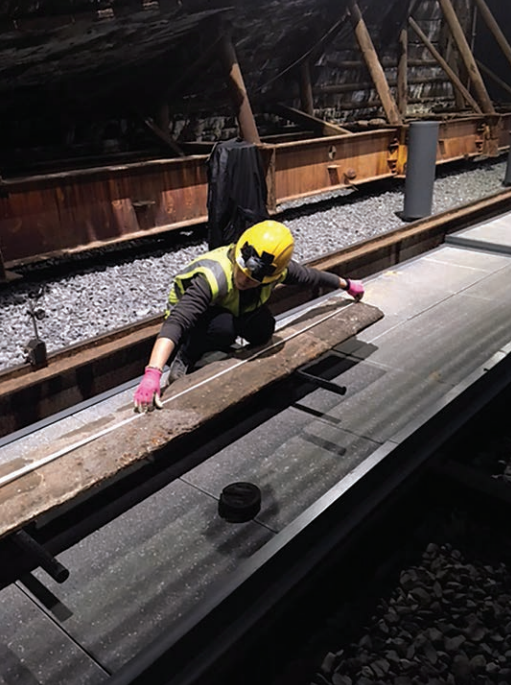
Nora Piva measuring one of the Orlop deck planks to determine the mechanical properties of wood
However, in order to have not just an overview of the biggest structural movement and so to keep track of most critical areas, a large part of the monitoring is done manually. Walking along the decks with tape in hand and a camera is still one of the best ways to complete our understanding of what is happening to the ship’s timbers. The rewarding view from the decks is well worth the effort of crawling for hours in the most inaccessible and uncomfortable areas of the hull.
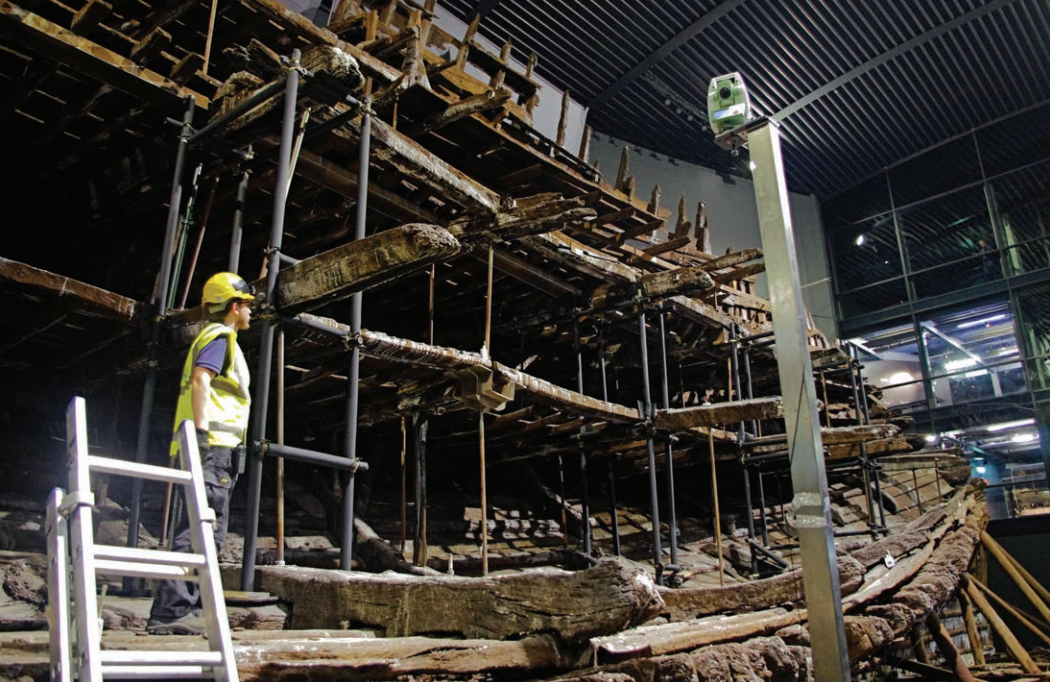
View from the hold of the Mary Rose
Associated Projects
The Mary Rose is a never ending source of information and study material. So many phenomena are taking place within her framework – from the cellular level to the macro structure – so it is critical to keep studying every aspect of her.
Among some of the main projects are studies of chemical development of acidic components in the wood, the development of de-acidification strategies, sonar and radar testing for non-invasive moisture content monitoring methods, neutron imaging for water-PEG interactions, and many more.
Together with the conservation team and the maintenance team of the Museum, hundreds of students and experts from different disciplines have worked on her, involving institutions from all over the world, as far as Canada and as close as Portsmouth. Most visitors will never fully know the incredible effort that it took, and still takes, to keep the Mary Rose as she is: her presence in the museum will always be testimony to the extraordinary passion of so many people.
The most fascinating aspect is that there is no need to be interested in Tudor shipbuilding or naval warfare to enjoy a visit. Once you step in the museum and you see her it is impossible not to be captured by the gripping story of this incredible ship, and the five hundred people who worked and lived on her.
The new-look Mary Rose Museum now allows you to see the ship without obstruction as never before. Many of the thousands of artefacts recovered from the seabed are also on display, telling the story of the men who lived, worked and died on board the Mary Rose.
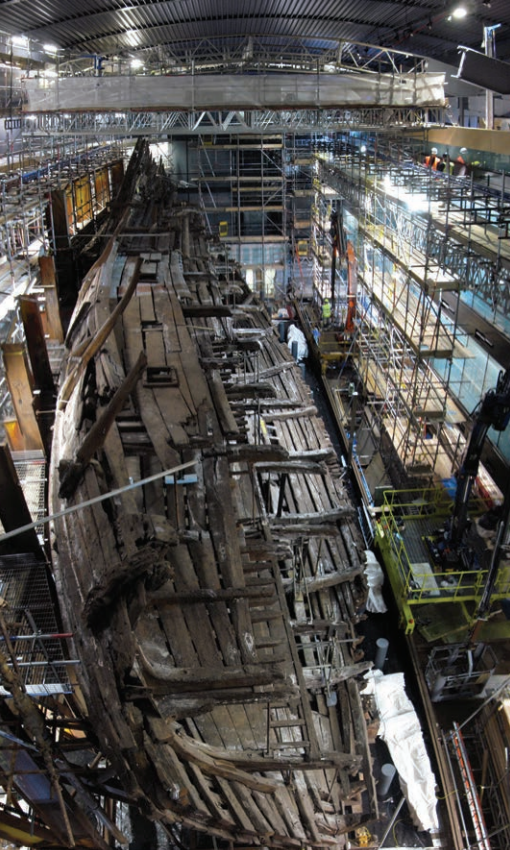
Building the museum around the ship: construction phase of the new museum in Summer 2016
